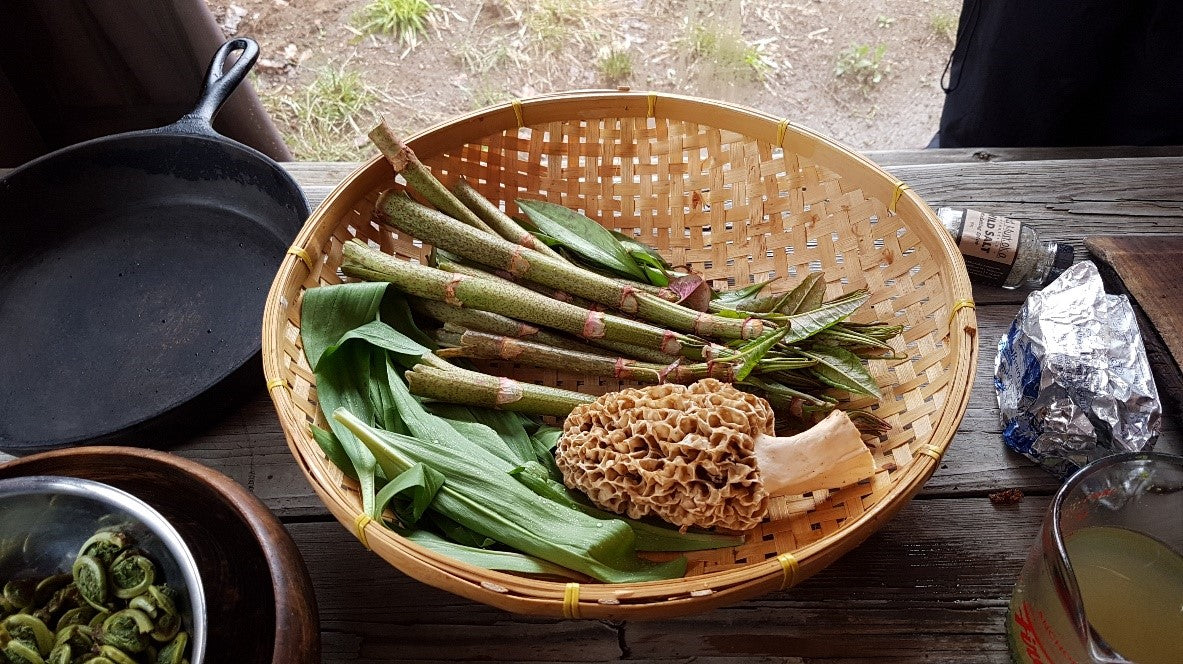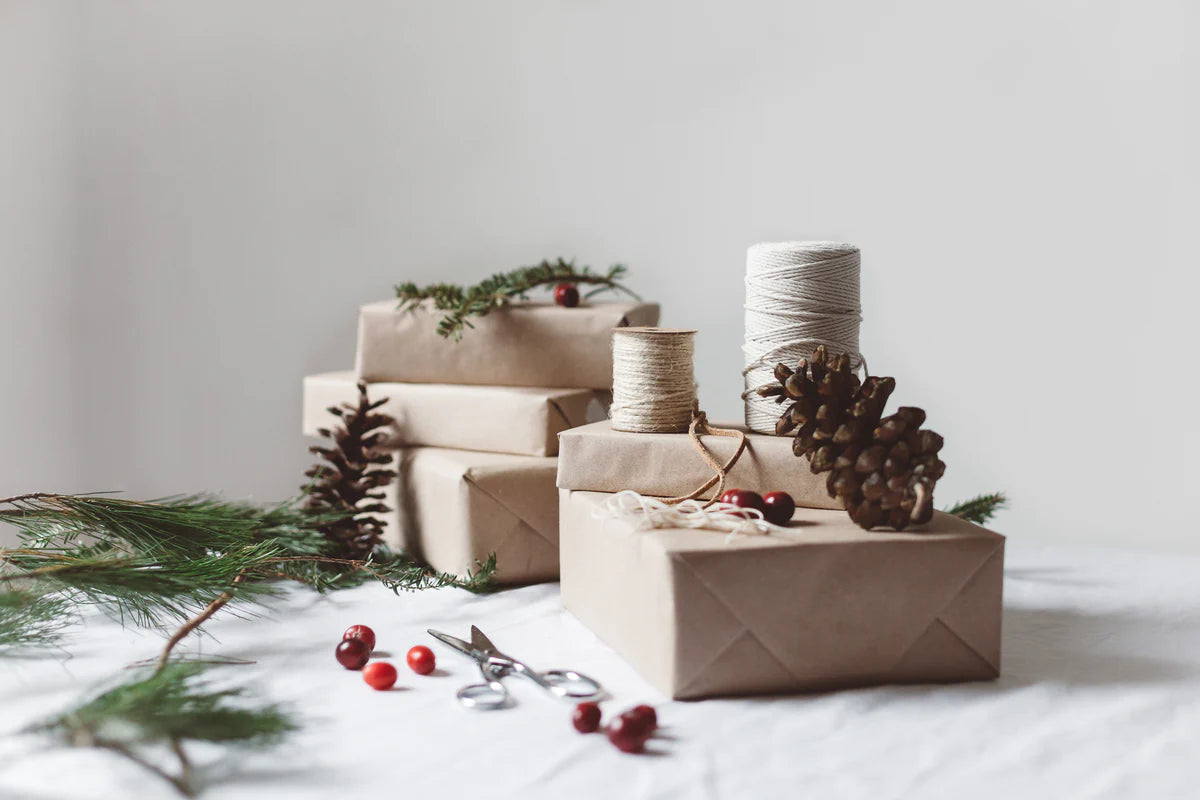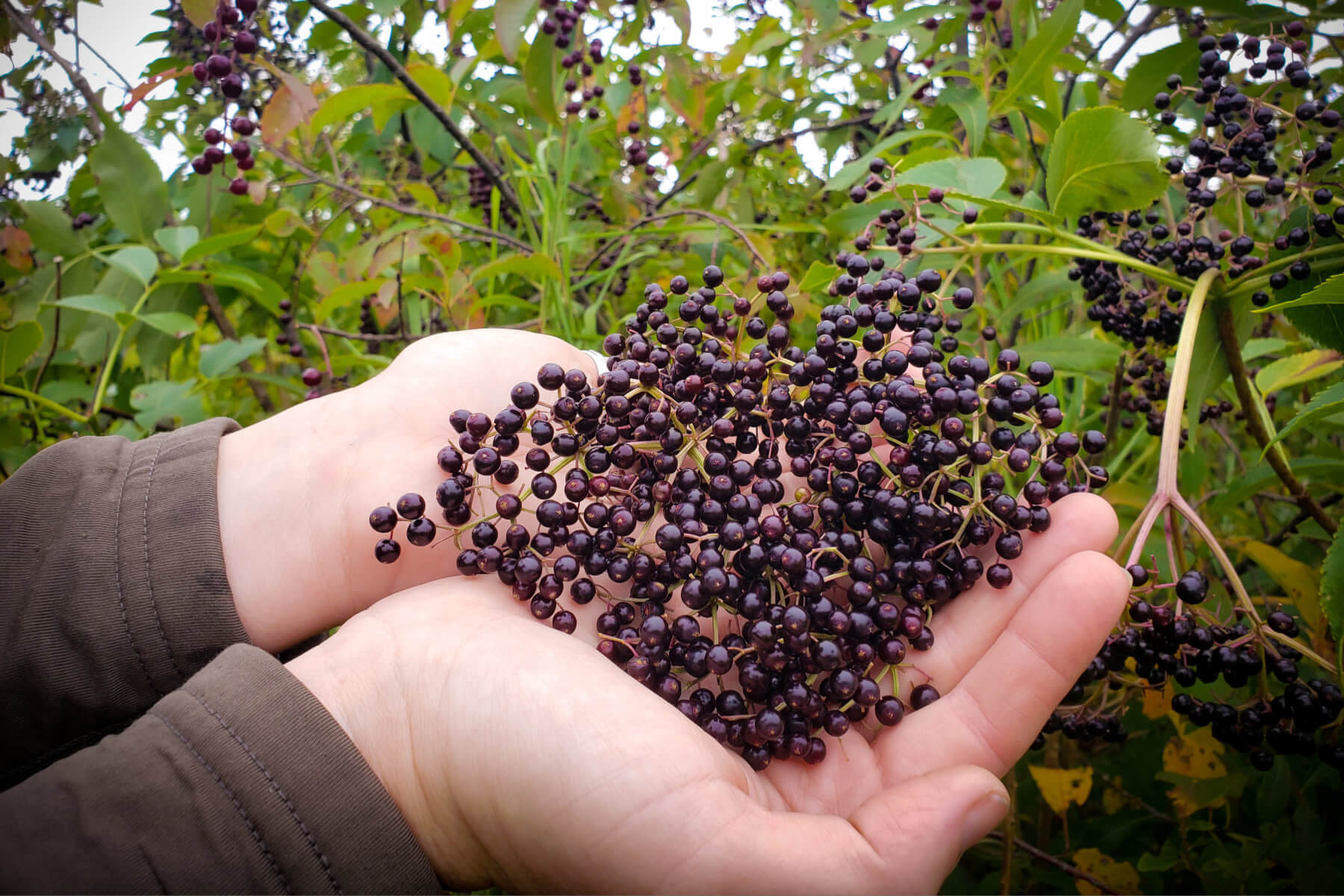By Student Monica Gagné
The phrase “see everything as if for the first time” aptly describes my experience in Laura’s Wild Medicine Program. Four years ago, I moved to Muskoka from a large city and had a natural inclination to spend most of my free time exploring the area’s trails populated by lakes, wetlands, and all sorts of forests. Being outside, revelling in the beauty of nature, quickly made this place feel like home. At the time, I had no idea just how much of Mother Nature had yet to be revealed or genuinely appreciated by me. While I had always considered myself an outdoorsy person, I was by no means a naturalist. I had only a vague understanding of herbalism and a strong desire to learn more about wildcrafting. That desire is what led me to seek out the Wild Muskoka Botanicals booth at the Bala Cranberry Festival. In meeting Laura and sampling her bitters, I immediately developed a taste for becoming more familiar with plants in our area and their traditional uses. I signed up for the first offering of the Wild Medicine Program as soon as Laura’s Wild Muskoka online newsletter announced it. By the end of the first session, I knew that I had enrolled in a program that would increase my knowledge about wild-harvested plants and mushrooms, as well as cultivated and common herbs, and I could already feel my awareness of the plants around me changing. But what I did not know is that Laura’s teachings and the experience of being in a holistic program with like-minded peers would also help to deepen my connection to nature by offering me a new perspective. Throughout the program, I began to experience the trails and lakes I had grown so familiar with, with fresh eyes. Seeing many of the plants and mushrooms, I had walked by quite regularly and even photographed for the very first time.
Being outside, revelling in the beauty of nature, quickly made this place feel like home. At the time, I had no idea just how much of Mother Nature had yet to be revealed or genuinely appreciated by me. While I had always considered myself an outdoorsy person, I was by no means a naturalist. I had only a vague understanding of herbalism and a strong desire to learn more about wildcrafting. That desire is what led me to seek out the Wild Muskoka Botanicals booth at the Bala Cranberry Festival. In meeting Laura and sampling her bitters, I immediately developed a taste for becoming more familiar with plants in our area and their traditional uses. I signed up for the first offering of the Wild Medicine Program as soon as Laura’s Wild Muskoka online newsletter announced it. By the end of the first session, I knew that I had enrolled in a program that would increase my knowledge about wild-harvested plants and mushrooms, as well as cultivated and common herbs, and I could already feel my awareness of the plants around me changing. But what I did not know is that Laura’s teachings and the experience of being in a holistic program with like-minded peers would also help to deepen my connection to nature by offering me a new perspective. Throughout the program, I began to experience the trails and lakes I had grown so familiar with, with fresh eyes. Seeing many of the plants and mushrooms, I had walked by quite regularly and even photographed for the very first time.





One of the most memorable parts of the program was the time we spent time preparing and tasting wild foods and making natural products that we could take home and use; having those opportunities to create helped to make what we were learning in the lessons more tangible. No matter how busy my summer got outside of the program, I knew that there would be a dedicated time in each class to apply what we were learning, and this emphasis on hands-on erudition resulted in very attainable learning goals for the course. Laura started by introducing us to foraged edible foods and then progressed into infused vinegar and Colonial Shrubs that provided both medicinal and culinary benefits. When the group as a whole had begun to develop an understanding of herbal energetics and a familiarity with plants had been established, we then advanced into more multifaceted wild medicines and herbal remedies. In each class we would learn new concepts, forage for plants, and then create; sometimes we would be required to tend to the infusions at home, bringing them to the following session for the next step in the process. By the end of the program, we had made a variety of creative wild food and herbal medicine products including infused vinegar, tinctures, salves, shrubs, teas, and other medicines, to start a home apothecary and to share what we had been learning with our families and friends.

 After completing the program, I sought out other herbalism learning opportunities, and from those experiences, I have come to recognize that what sets the Wild Medicine Program apart from most is, Laura herself. Not only is Laura qualified and experienced in the topics she covers, she is simultaneously inspiring, passionate, and downright approachable. In listening to the way that she identifies and articulates the ever-evolving relationship between plants and people, I began to appreciate her awareness and understanding of our incredible plant allies and was motivated to cultivate my own deeper connection with them. As someone who knew very little about plant identification and herbalism, I think it could have been very easy for me to get left behind in the Wild Medicine Program. However, Laura has structured the course in a way that introduced concepts gradually and subtly, in a manner that did not overwhelm newcomers while still catering to those already immersed in the world of herbalism. In doing so, Laura provided a well-round program that offered something for everyone no matter their level of expertise. In providing anecdotes from her experiences, Laura is exceptionally personable and passed along many of the best practices and tips she has learned the hard way through trial and error, and experimentation. In providing new tastes, experiences, and opening up her homestead, Laura taught me about plants through a method that incorporated a personal journey of exploration. Laura was able to show me new ways to connect with the natural world and shared her knowledge about how to promote health and wellness through the incorporation of wild plants and traditional herbal medicines.
After completing the program, I sought out other herbalism learning opportunities, and from those experiences, I have come to recognize that what sets the Wild Medicine Program apart from most is, Laura herself. Not only is Laura qualified and experienced in the topics she covers, she is simultaneously inspiring, passionate, and downright approachable. In listening to the way that she identifies and articulates the ever-evolving relationship between plants and people, I began to appreciate her awareness and understanding of our incredible plant allies and was motivated to cultivate my own deeper connection with them. As someone who knew very little about plant identification and herbalism, I think it could have been very easy for me to get left behind in the Wild Medicine Program. However, Laura has structured the course in a way that introduced concepts gradually and subtly, in a manner that did not overwhelm newcomers while still catering to those already immersed in the world of herbalism. In doing so, Laura provided a well-round program that offered something for everyone no matter their level of expertise. In providing anecdotes from her experiences, Laura is exceptionally personable and passed along many of the best practices and tips she has learned the hard way through trial and error, and experimentation. In providing new tastes, experiences, and opening up her homestead, Laura taught me about plants through a method that incorporated a personal journey of exploration. Laura was able to show me new ways to connect with the natural world and shared her knowledge about how to promote health and wellness through the incorporation of wild plants and traditional herbal medicines.

 Laura’s approach to teaching lent itself well to developing a community of learning amongst peers. Not only did I have a knowledgeable teacher in her, but I was also immersed in a learning environment that honoured the prior knowledge of those in attendance and encouraged sharing and insights from program participants. Everyone in the program came with their own experiences with plants and Laura acted as a vessel to help deepen those connections. For those of us who develop a sense of wonder in getting to know plants and the natural world, it can be challenging to find other people with similar interests or perspectives. With our small class size, I was able to connect with people I would not have met any other way. The community we built throughout the course continues well after the program ends and I feel that I have grown as a person because of my involvement in it.
Laura’s approach to teaching lent itself well to developing a community of learning amongst peers. Not only did I have a knowledgeable teacher in her, but I was also immersed in a learning environment that honoured the prior knowledge of those in attendance and encouraged sharing and insights from program participants. Everyone in the program came with their own experiences with plants and Laura acted as a vessel to help deepen those connections. For those of us who develop a sense of wonder in getting to know plants and the natural world, it can be challenging to find other people with similar interests or perspectives. With our small class size, I was able to connect with people I would not have met any other way. The community we built throughout the course continues well after the program ends and I feel that I have grown as a person because of my involvement in it.
 Reflecting on my growth during this journey, I realize that there are so many details in plants and ecosystems that I had never seen before. I have come out of the Wild Medicine Program with a greater understanding of medicinal plants, myself in relation to them, and the environment they grow in. I have the confidence to forage and use many wild plants, and the reverence to understand my responsibility in preserving them and their environments. Most importantly, I have a desire to learn more and now recognize that the plants themselves are my best teachers. The Wild Medicine Program is what you make of it and what you have time to dedicate yourself to. For some students the Saturday sessions were it, others never missed a supplemental Sunday hike, while some of us choose to engage in the extracurricular plant study project outside of class time, and we were all able to consult Laura on areas of personal interest throughout the five months. For me, the weekends dedicated to the Wild Medicine Program became a form of self-care. Not only was I deepening my connection to plants and plant medicine, but I was also devoting time to invest in myself and developing my interests.
Reflecting on my growth during this journey, I realize that there are so many details in plants and ecosystems that I had never seen before. I have come out of the Wild Medicine Program with a greater understanding of medicinal plants, myself in relation to them, and the environment they grow in. I have the confidence to forage and use many wild plants, and the reverence to understand my responsibility in preserving them and their environments. Most importantly, I have a desire to learn more and now recognize that the plants themselves are my best teachers. The Wild Medicine Program is what you make of it and what you have time to dedicate yourself to. For some students the Saturday sessions were it, others never missed a supplemental Sunday hike, while some of us choose to engage in the extracurricular plant study project outside of class time, and we were all able to consult Laura on areas of personal interest throughout the five months. For me, the weekends dedicated to the Wild Medicine Program became a form of self-care. Not only was I deepening my connection to plants and plant medicine, but I was also devoting time to invest in myself and developing my interests.
By the end of the program I had become more in tune with plant identification and traditional uses, but what I am most thankful for is that the program taught me a new way of seeing and rediscovering a wonderment with our plant world. Robin Wall Kimmerer, the author of Braiding Sweet Grass, writes that “a place becomes a home when it sustains you, when it feeds you in body as well as spirit” and he emphasizes that plants play an integral role in reweaving the connection between land and people. Participating in this program helped me to indeed make Muskoka my home by learning more about the plants and ecosystems that surround us. I have ultimately had a change in perspective, and I am grateful for the seeds that Laura planted in me to cultivate a deeper relationship with plants and their healing properties. Connecting with nature has taken on a new meaning for me, and I sincerely feel that this is just the beginning of a beautiful journey.






